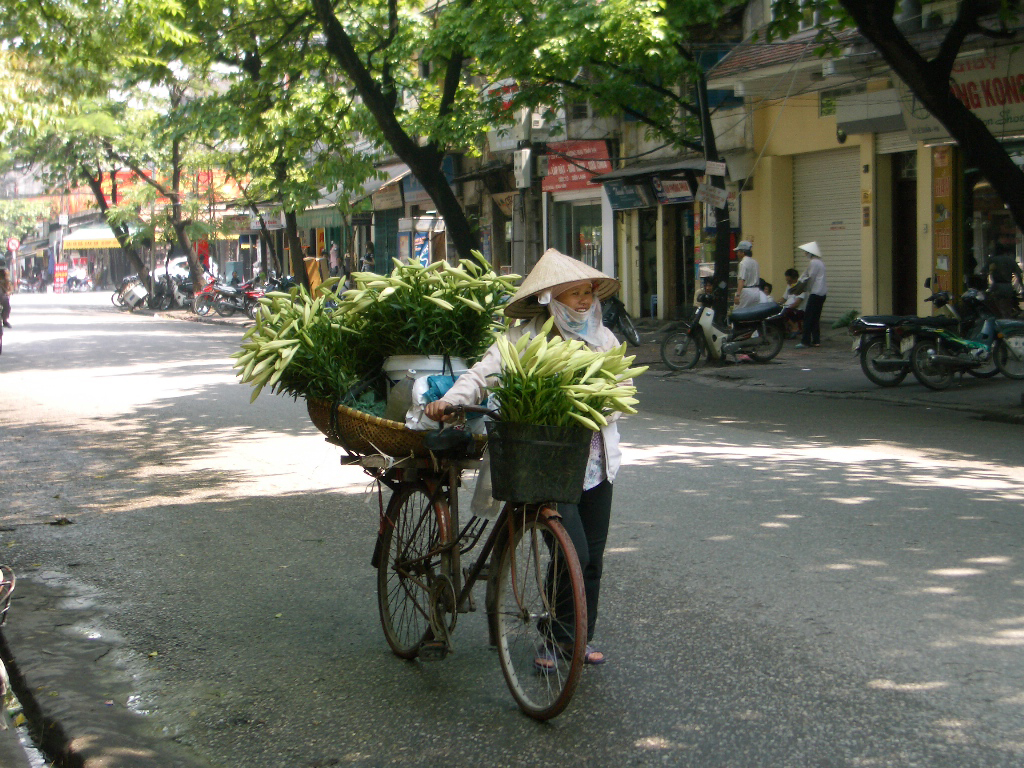HANOI, Vietnam — I want tell you about Vietnam: its people, its culture, its economy, its disputes, and its aspirations. But I can’t. Not yet.
Like other visitors to this capital city, I’m not focused on the wide, French-colonial boulevards, the roadsides decorated with extraordinary ceramic mosaics and the great parks; the glorious architecture, which tells its history; traditional, colonial and modern; or the fabulous food, informed by the French but resolutely Vietnamese.
No. I’m totally mesmerized by the traffic: one of the wonders of the world. It’s a wonder not because, like so many of the world’s cities, it’s so terrible, but because it flows in the most extraordinary way. It’s the triumph of a lack of system over a system.
For the most part, Hanoi has no traffic lights, except on major thoroughfares, and no stop or yield signs. Traffic moves along at about 15-miles-per-hour; sometimes a little faster and sometimes slower, depending on the time of day.
Looking at the traffic is like watching a column of ants, going hither and thither in a courteously chaotic way. The only absolute rule on the roads is to keep to the right. Everything else is improvisation.
At the heart of this traffic miracle, this way of moving millions of people with little delay, is the humble but iconic Vespa scooter, its imitators and relations, all powered with small engines in the 150 cc category. For those not intimate with the intricacies of motorcycles, a top-of-the-line Harley Davidson comes in at 1,247 cc.
But central to the Hanoi traffic triumph are scooters and very light motorcycles (some of them electric), the occasional moped and even bicycles — although compared to when I was here 20 years ago, the bicycle has nearly disappeared.
To the more than 3 million scooters, most of which take to the streets daily, add the skill, courtesy and physical courage of the riders. They weave, dodge, brake, swerve, swoop, accelerate and slow in what, to American eyes, is an unscripted ballet with a cast of millions. The dance is known, but the choreography is new by the split-second.
There are cars, too, but they’re the minority. They let themselves into the shoals of seething motor scooter riders with a confidence that I’d never have. I’d never go anywhere, being convinced that I’d plow down dozens of intrepid riders with my first tentative yards onto the road. You must not only have patience, but also enough boldness to know that the river of motorcycles — a river that ebbs and rises, but never ceases — will accommodate you.
I sit in the back of my taxi convinced that blood will flow as I watch young and old glide by with a determination only otherwise seen in NASCAR drivers. The dance is fast and furious; the music is all New World Symphony.
It is worthy of study by fluid dynamists. Maybe the traffic, the smooth-flowing traffic of Hanoi, should also be studied by sociologists.
Everything happens on the darting, rushing motor scooters and mopeds of Hanoi. Families of three are transported, young men and young women ride abreast and meet on wheels.
If you want to cross the street, pluck up you courage, ask forgiveness from your Creator, and step into the maelstrom of motorized wonder, believing, as you must, that the throng of riders in Hanoi have extrasensory perception and will part, like the Red Sea, for you.
Who would believe that watching traffic could be recreational? Worth the trip, almost.
Reporting on Vietnam, with its intriguing culture, emerging economy, territorial contentions, and future relationship with the United States, will have to wait. There may be a moped in my future. — For the Hearst-New York Times Syndicate

 Follow
Follow
Leave a Reply